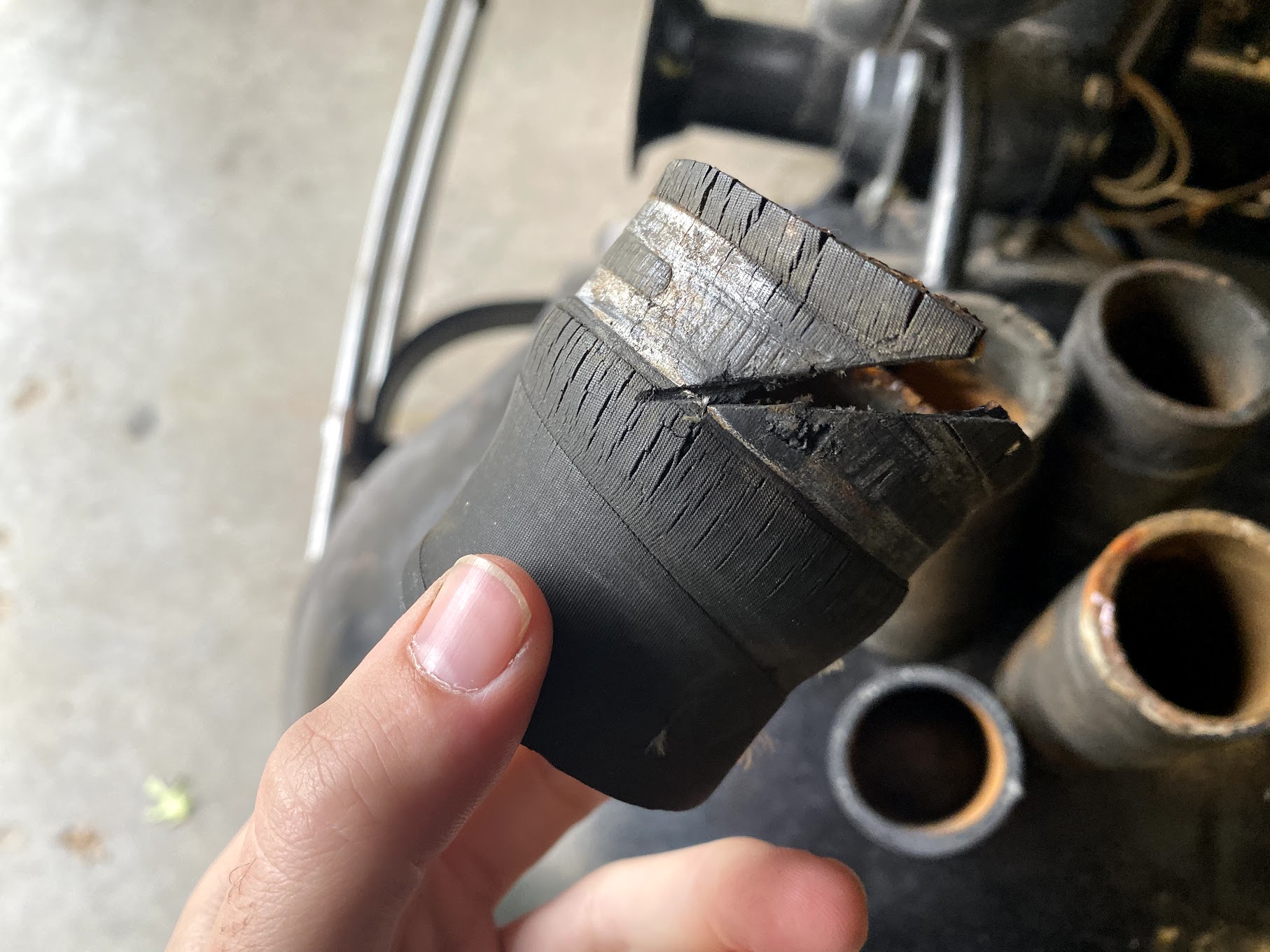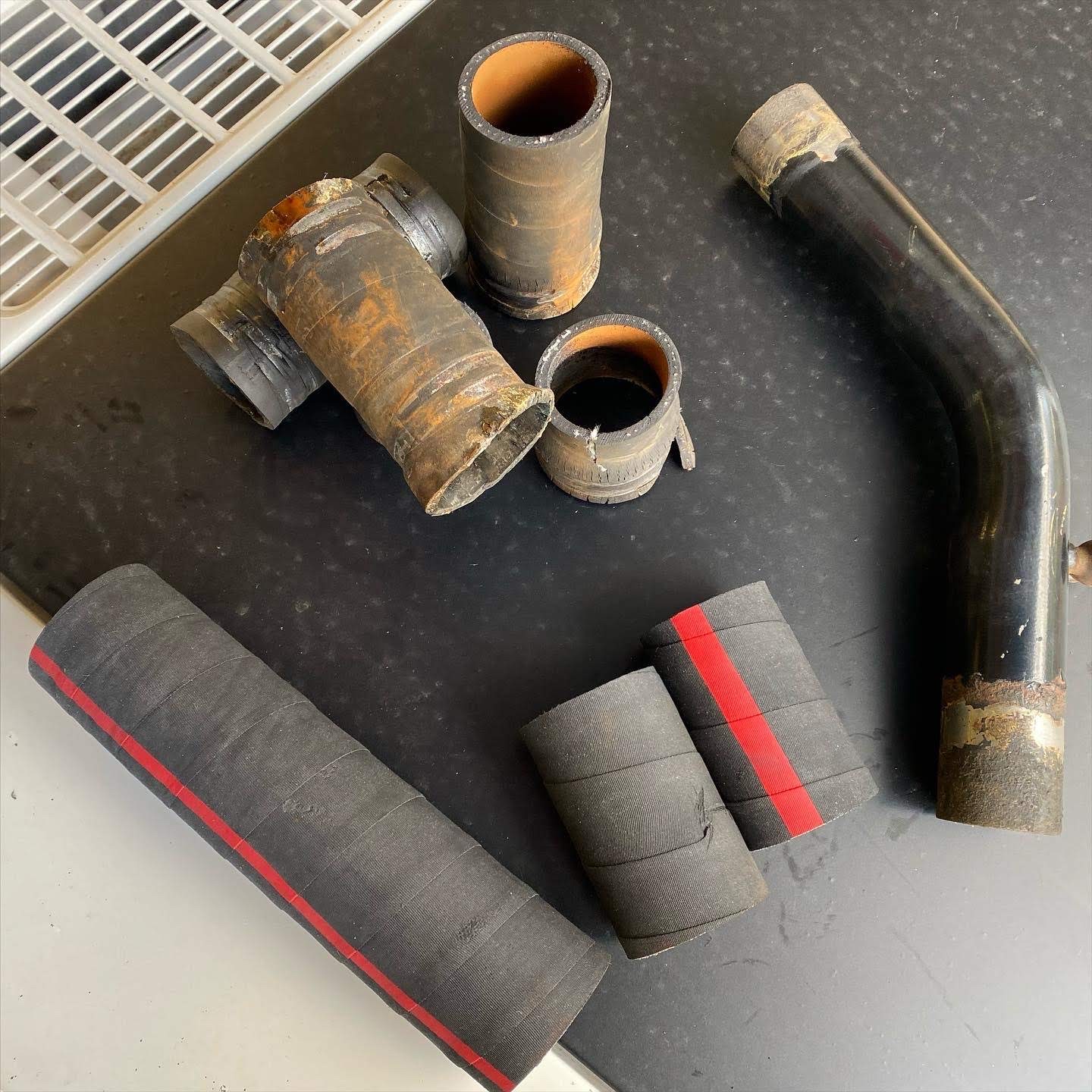Media | Articles
Replacing radiator hoses shouldn’t require a Sawzall—but mine did
When I stole my father’s Model A Ford from his garage in Kansas and parked it next to my Corvair in Michigan, I knew the car had great bones. Really, it’s an ideal project car. My first goal was simply to get it running, and I did the bare minimum to accomplish that feat. To take the next step of making it reliable, I need to replace some old parts. Turns out, some of them are putting up a fight.
The Model A engine is a simple engine compared to, well, just about anything. After hearing it run, where it thankfully didn’t make a racket of terrible noises, I started creating a list of all the parts I should replace or at least service before starting to regularly drive it around town. First order of business: the rubber radiator hoses that turned so old and hard they might as well have been stone.
Rock-hard radiator hoses have a tendency to burst under the pressure of a hot cooling system. Fortunately, the Model A does not have a pressurized system (it works via gravity), but that is no reason to neglect replacement. Hardened rubber can still split, crack, or otherwise fail, leaving me stranded. So I rang up a Model A parts house and ordered some fresh, soft hoses to be dropped on my doorstep.


Swiping my credit card is always the easy part. To make work move along more smoothly, I removed the center-fold hood, which gave me unobstructed access to the flathead four-cylinder.
Marketplace
Buy and sell classics with confidence
The cooling system is quite simple, with just one upper hose from the radiator to the water neck on the front of the engine and two shorter hoses on a tube which connects the engine block to the bottom of the radiator. Removing the clamps from the three radiator hoses did nothing—the hoses were positively stuck to the radiator and engine.
All three connections required some level of finesse to even get them broken loose. Hell, they’d been attached to a neck for roughly four decades. Large channel-lock pliers are usually a good way of grabbing the stubborn hoses and getting them to rotate, which then allows them to move a bit easier. But these hoses didn’t even have the necessary flex for that trick to work. I had to bring in the heavier tools.
I admit my solution was a bit… excessive. An overreaction, perhaps. Putting a heat gun on the hoses to soften them or prying at the edge of hoses just seemed futile, so I grabbed the reciprocating saw from the shelf and prepared to slice my way down a path of no return. I have no regrets.

Interestingly, the hoses put up a fight even with a fresh blade and battery, evidence this rubber had grown especially ornery in its old age. After slicing the upper hose at about the midpoint, I then had enough room to pull the hose straight off each neck. Crude, but effective.
Then it came time to install the fresh hoses. A small amount of silicone spray on a finger and then wiped around the inside of the hose made installation a painless affair. When I finally tightened the clamps, the feeling of success almost felt underserved for such a simple task.
Of course, I wasn’t done. Prior to this minor surgery the car had been leak free, and adding water to the radiator confirmed things are staying that way. For now. (Honestly, I expect it to start leaking any day now.)

Replacing rubber hoses and parts is an important step to address on any car that’s been parked for an extended period of time. Regardless of mileage or use, that rubber is going to age. Fortunately, the Model A uses mechanical brakes, so I don’t have to deal with replacing rubber brake lines, making these radiator hoses the only rubber lines I need to worry about going forward. (I don’t even have rubber fuel lines on the A.) There is something to be said for reviving a pre-war car—the simplicity is a delight.
There is more work to be done yet, but the driving season is quickly ending here in Northern Michigan. Rather than rush to get a few final drives this year, I am methodically laying out a plan for the work that I need to complete over the winter. It’ll be a bit of delayed gratification by the time I can actually drive my Model A again, but I know this car is going to be a fun driver come spring.





